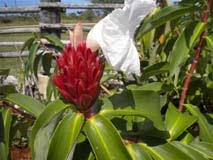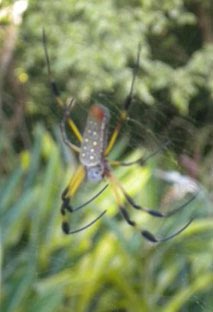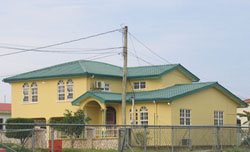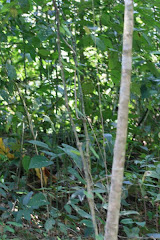
Is Belize an expensive country for an expatriate? That question obviously does not have a singular answer. It depends on a number of factors, and with the risk of sounding like a Belizean politician who never gives a straight answer I will try to shed some light on the issue of the cost of living for expatriates in Belize (all prices in US$). In no particular order, I would say it depends on the following factors:
- Where you live: On the islands like San Pedro and Caye Caulker all prices are at least 20% higher than on the mainland.
- Your life style and budget: Being an American diplomat working for Uncle Sam who is willing to pay $5,000 for your monthly house rental is not the same as being a retired couple with a modest pension. A decent mid-sized house can be rented for one tenth this amount, between $500 and $1,000. If you leave your air-conditioning on day and night you’ll have a bill of over $1,000 at the end of the month. We pay around $125 per month for electricity, using mainly fans and one hour max of AC per day.
- The countries to which you’re comparing The Belize dollar is linked to the US dollar 2:1 and with the high-valued Euro, Europeans find it cheaper than most Americans. For sure Belize is more expensive than its neighboring countries, Mexico and Guatemala.
But let me tell you about the prices I am paying here and you can reach your own conclusion. Tuesdays and Fridays are market days here in Belmopan city. Defying the heat, I take my big shopping bag, load it with the fruits and vegetables available - which usually means oranges, grapefruit, pineapples, papayas, water melons, carrots, cucumbers, spinach and tomatoes, and I pay around $12 - no hassle, no cheating, no bargaining like in some other countries where prices double as soon as they see gringos. Then I go on to the bakery to buy two loaves of brown bread, $2.25 each, followed by a visit to the meat shop: chicken breast and ground beef for $3.50 per package. From there I proceed to the supermarket. There are two types of supermarkets: Belizean-owned shops like Brodies, and Chinese supermarkets. I found that Brodies is usually somewhat more expensive though not on all products, but it is clean and air-conditioned. This cannot be said about the Chinese supermarkets, where I witnessed two school girls stepping on a rat’s tail last week. I don’t know who squealed louder, the girls or the rat. The Chinese seemed unimpressed.
There are rumors that Chinese shopkeepers shut down their freezers at night to save on electricity, which is obviously a disaster for frozen food. I don’t know if that is true; we have not been sick here at all, but I do know that they sell medium-sized Head & Shoulders shampoo which has been diluted with water for $6.25. That said, Chinese supermarkets are indispensable in Belize because they are always open, have a good variety of goods and a high turnover, but cleanliness is definitely not their forte. I shop at both Brodies and the Chinese stores because by now I know what to buy where. Depending on my mood and my wallet, I pay between $50 and $100 for my weekly groceries for my family of three, although I usually have to pop in a couple of additional times during the week because I always forget to buy stuff.
Most food items are imported, and for international brands we pay through the nose: Yoplait yoghurt, Loreal shampoo, Tide washing detergent, Lay’s chips, Ziplock bags are expensive, but you can also opt for Mennonite yoghurt, White Rain Shampoo, Blanca Nieves washing powder, Marie Sharp’s chips and No-Brand bags, and spend half or less. I reckon that around 95% of consumer goods are imported, yet good-value local products include citrus, pineapple, coconut, vegetables, dairy such as ice cream, white cheese and (slightly sour) yoghurt, chicken, sausages, ground beef, and tortillas. You can also get good basic wooden furniture like my beautiful multi-colored maho gany dining table that I got for 125 bucks in the market. In fact I bought most of my furniture and kitchen appliances in Belize, new or second hand, and succeeded pretty well in creating a home in which I feel comfortable. The only challenge was to find a good sofa; most are bulky and ugly with horrible big flower patterns from Courts furniture shop. I ended up having one made right here in Belmopan. I downloaded a picture from ikea.com, bought some fabric and 5 days later we were sitting on a pretty good couch for $420. All in all our move-in has cost us around $4,500 including all electrical appliances because all those we had were 220 volt and with different plugs, thus not worth bringing over. Americans will not have that problem because Belize uses 110 volts 60 Hz, as they do in the U.S., so your appliances will work fine here.
gany dining table that I got for 125 bucks in the market. In fact I bought most of my furniture and kitchen appliances in Belize, new or second hand, and succeeded pretty well in creating a home in which I feel comfortable. The only challenge was to find a good sofa; most are bulky and ugly with horrible big flower patterns from Courts furniture shop. I ended up having one made right here in Belmopan. I downloaded a picture from ikea.com, bought some fabric and 5 days later we were sitting on a pretty good couch for $420. All in all our move-in has cost us around $4,500 including all electrical appliances because all those we had were 220 volt and with different plugs, thus not worth bringing over. Americans will not have that problem because Belize uses 110 volts 60 Hz, as they do in the U.S., so your appliances will work fine here.
Some other interes ting prices are: Repairing and changing a tire: $8, color and highlight my hair with a hair cut and a blow dry all together for $50, a pedicure $12, ‘high-speed’ internet (quotation marks intended) costs us $55 per month, school fee at the semi-international pre-school is $185 per month and a yard mowing and cleaning is around $17. I recently had a crown replaced by a renowned dentist in Belize city and paid $175. For more detailed prices you may want to go to www.belizefirst.com/cost.html
ting prices are: Repairing and changing a tire: $8, color and highlight my hair with a hair cut and a blow dry all together for $50, a pedicure $12, ‘high-speed’ internet (quotation marks intended) costs us $55 per month, school fee at the semi-international pre-school is $185 per month and a yard mowing and cleaning is around $17. I recently had a crown replaced by a renowned dentist in Belize city and paid $175. For more detailed prices you may want to go to www.belizefirst.com/cost.html
Very importantly, for a beer in a bar we pay $1.75 D. It’s only $1.50 at happy hour or when ordering ten or more, something we have personally introduced here in Belmo pan, which we call the Bucket concept. I am talking about Belikin beer, the Belizean beer that comes in sturdy 10 oz. dark brown bottles, so heavy that it is impossible to feel if they’re full or empty. I did not like its taste in the beginning but I have acquired it by now. So, beer drinkers can easily survive here. Wine lovers will have to dig deep into their pockets, as a simple bottle of wine will easily cost $15, and I am not even talking about a good bottle of wine. Rum, on the other hand, is cheap, the same price as a bottle of wine but for an XXL size bottle of One Barrel, the local rum which has won several awards. What can I say, when in Rome do as the Romans, right?
pan, which we call the Bucket concept. I am talking about Belikin beer, the Belizean beer that comes in sturdy 10 oz. dark brown bottles, so heavy that it is impossible to feel if they’re full or empty. I did not like its taste in the beginning but I have acquired it by now. So, beer drinkers can easily survive here. Wine lovers will have to dig deep into their pockets, as a simple bottle of wine will easily cost $15, and I am not even talking about a good bottle of wine. Rum, on the other hand, is cheap, the same price as a bottle of wine but for an XXL size bottle of One Barrel, the local rum which has won several awards. What can I say, when in Rome do as the Romans, right?
All in all, I personally find the cost of living here in Belmopan, Belize quite reasonable, but I must say that, while we live well by Belize standards, we still have to watch our spending. I never use my credit card here, the main reason being that our cards have been copied several times here. I only found this out when my bank statements suddenly showed purchases of Apple computers and Nike shoes from Los Angeles and New York which I am sure I never bought. Luckily my bank noticed the suspicious purchases and I was able to recuperate the amounts. I do not recommend credit card use here in Belize and there are ATMs across the country so you may as well use your debit card.
The other reason my credit card stays in my purse is basically that there’s not that much opportunity to really spend. I have not bought any clothes, shoes, toys, hand bags, CDs, books, jewelry, movie tickets, make-up or electronic gadgets since I arrived here.
In that respect Belize is savers paradise. No shops, no malls; no temptations. How’s that for saving on the cost of living!?



















































































